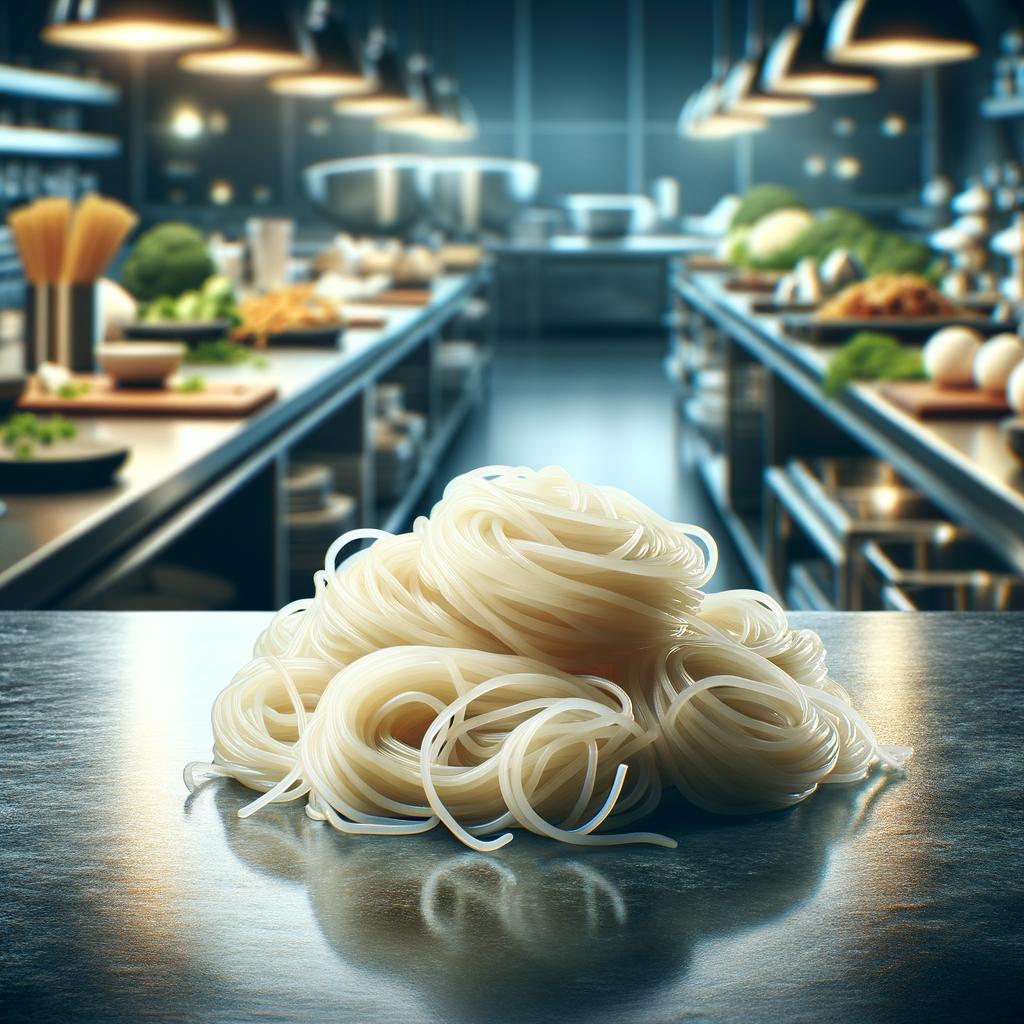Konjac Noodles

Description
Konjac noodles, also known as Shirataki noodles, are a remarkable ingredient that has been gaining popularity in the culinary world. They are thin, translucent, and gelatinous, presenting a unique texture that's slightly chewy and springy. The noodles are virtually tasteless on their own, making them a versatile ingredient that absorbs the flavors of whatever they are cooked with. The most distinctive characteristic of Konjac noodles is their incredibly low calorie and carbohydrate content, which sets them apart from traditional noodle varieties. This makes them a popular choice among those following a low-carb, keto, or gluten-free diet.
Primary Uses
Konjac noodles are primarily used as a pasta substitute in a wide range of dishes. From stir-fries to soups and salads, these noodles can be found in various cuisines around the world, particularly in Asian cooking. They are a fundamental ingredient in traditional Japanese dishes like Sukiyaki and Oden. Beyond their culinary uses, Konjac noodles have been used for their medicinal properties, particularly in traditional Chinese medicine, to aid digestion and weight loss due to their high fiber content.
History
The history of Konjac noodles is as intriguing as the noodle itself. Originating from Japan, these noodles have been consumed for over 1,500 years. The Konjac plant, from which the noodles are made, is native to warm subtropical to tropical eastern Asia, from Japan and China south to Indonesia. The use of Konjac noodles has evolved over time, from a traditional Japanese staple to a modern health food trend. There are even legends that say Konjac was the secret to the long lives of the Japanese monks who first used it.
Nutritional Information
Konjac noodles are a nutritional powerhouse in their own unique way. They are low in calories and carbohydrates, yet high in fiber, specifically a type of fiber called glucomannan. This fiber is known for its impressive health benefits, including aiding weight loss, reducing cholesterol, and improving gut health. Compared to regular pasta, which is high in carbs and low in fiber, Konjac noodles offer a healthful alternative. However, they should be eaten as part of a balanced diet, as they lack other essential nutrients like protein and vitamins.
All in all, Konjac noodles are a fascinating ingredient with a rich history and a promising place in the future of healthy cuisine.

